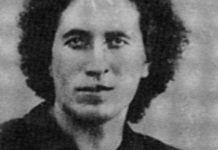Nature re-wrote the history of Lanzarote, in Spain’s Canary Islands, off the coast of North Africa, turning it from a lush agricultural center to a volcanic wasteland.
Events that fill history books – the wars, migrations, the rise and fall of civilizations, the dynasties, politics and social movements — are usually the workings of humans.
But on the Spanish island of Lanzarote, one of the Canary Islands archipelago, it was a cataclysmic natural event – six years of continued volcanic eruption — that dramatically changed the little island’s history and its landscapes. Just as interesting as the violent events themselves are the ways in which islanders have adapted their lives to the new land the volcanoes left behind.
The 6-Year Volcano
On the night of September 1, 1730, the quiet and prosperous farming communities of central Lanzarote were changed forever. Nothing would ever be the same for the farmers and herdsmen who inhabited the little towns. Two miles outside of the village of Yaiza the ground opened and spewed out rivers of molten lava that flowed over fields, covering farms and entire villages. Mountains heaved up out of the low landscapes and lava continued to flow, with new volcanoes springing up and old ones continuing for the next six years.
The village priest of Yaiza, Father Lorenzo Curbelo, left the only written record by an eyewitness: A month and a half after the first eruptions he described new ones. “Enormous clouds of smoke escaped, flowing over the whole island,” he wrote, “ accompanied by volcanic ashes, sand and debris. The clouds condensed and dropped boiling rain on the land. The volcanic activity remained the same for ten whole days with cattle dropping dead, asphyxiated by the vapours.”
Day by day his diary record the devastation of his island, describing how the rivers of molten rock rushed down to the sea and overflowed more and more land and villages were destroyed one by one. His diary continues for more than a year, but the devastation continued for five more years. Lava did not stop flowing until April of 1736.
Fields of Lava
By the time the volcanoes had stopped showering ash, lava and deadly gasses over the landscape, more than twenty-two villages had been destroyed or seriously damaged. In some, only a handful of buildings remained; in others there were none. The once-fertile farmland was unfit for the cattle and crops that once flourished there. Much of it couldn’t even be walked on, let alone farmed,. It was in many places covered deeply with rivers of black lava that had solidified into a porous and jagged sea of black rock called malpais. Every place else was covered in thick layers of pumice and coarse ash.
Even today it is easy to see the extent of the destruction; whole areas are still covered with lava and much of the rest remains black with ash where a few primitive wild plants are only recently beginning to take hold.
Lanzarote’s Malvasia Wine Industry is Reborn
But the farmers who had been driven to neighboring islands came back, and learned to adapt and use the ash, called picon or lapilli, to their advantage. The vast La Geria wine-growing area north of the rebuilt Yaiza was planted in the black picon, which gathers moisture from the nightly dew to water the vines. The Malvasia (also called Malmsey) wines are famous worldwide and elsewhere on the island, farmers have learned to grow crops through thee covering of black cinder.




